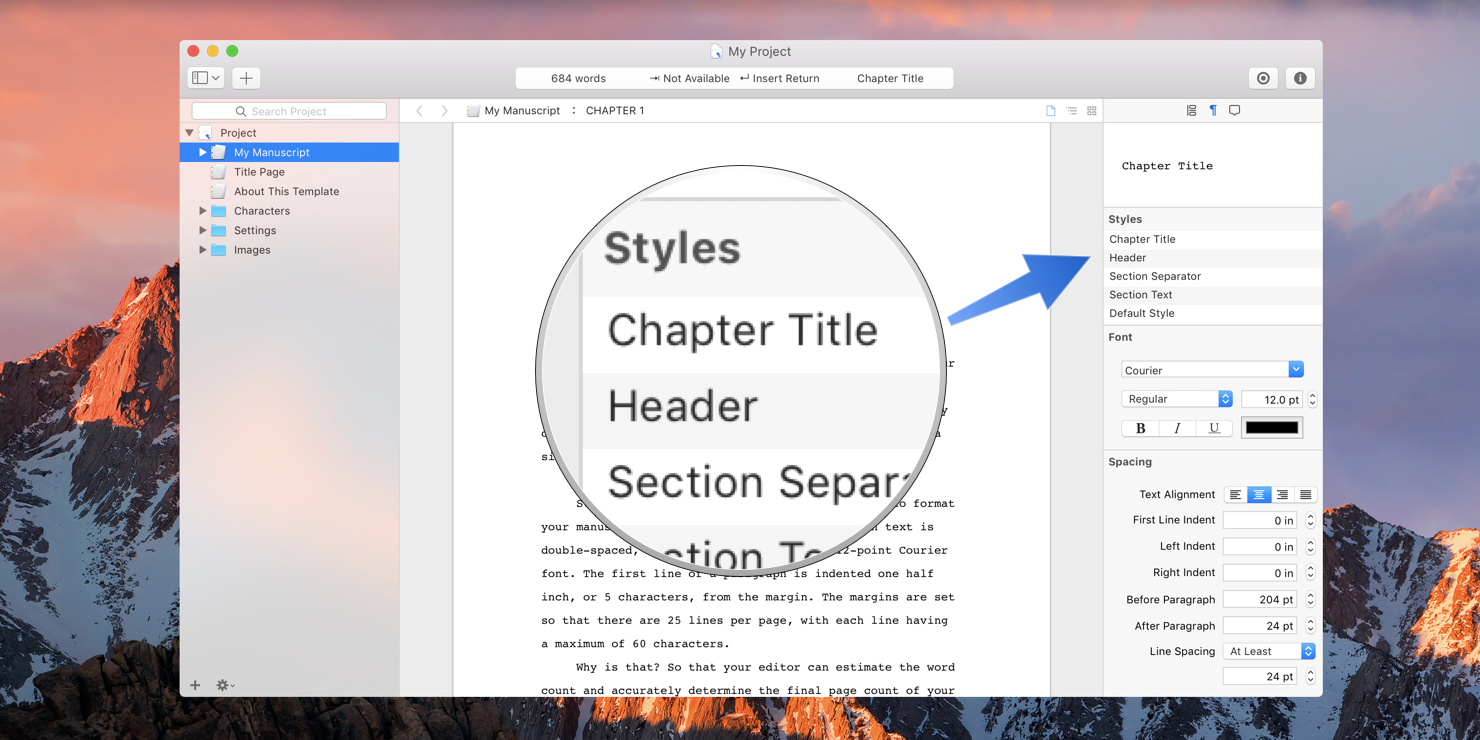
In this tutorial, you’ll learn how to import a plain text file and use the style tools in Storyist to turn it into a properly formatted manuscript. If you’d like to follow along, you can download the sample files for this tutorial.
First, let’s open PrideAndPrejudice.txt in TextEdit. This file is just a plain text file containing the unformatted text for Jane Austen’s Pride and Prejudice.
Next, switch to Storyist, create a new project from the Blank template, and import PrideAndPrejudice.txt by dragging it to the project view.
Notice that the text is all set in the same format.
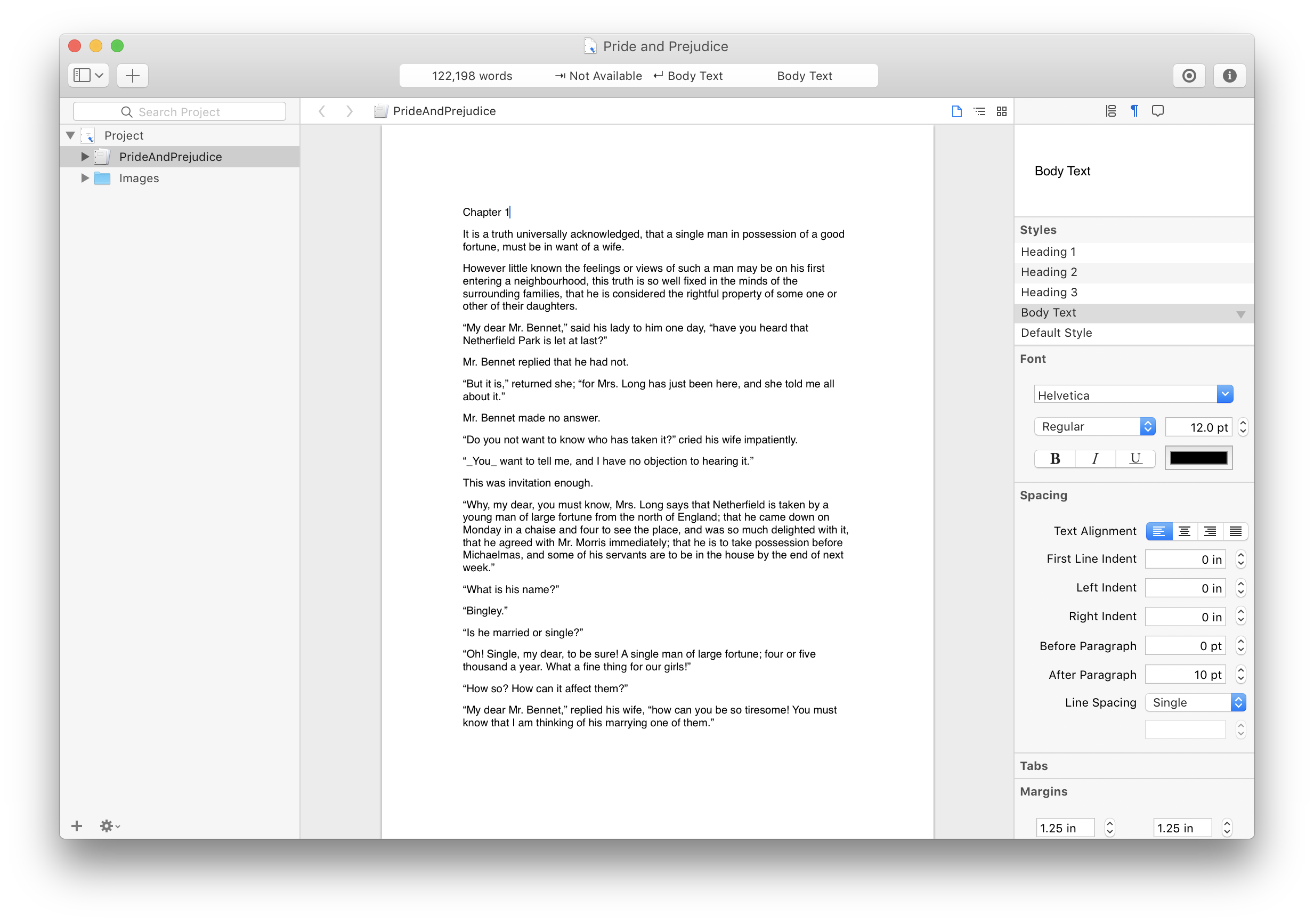
We could start to format the manuscript by selecting the text and changing the font and alignment manually. We could, for example, use the format inspector to change the chapter title to be set in 12 point courier, and make it center aligned, and repeat the process for the other 60 chapters in this manuscript.
We could, but it’s much easier to use styles.
A style is just a named collection of font and spacing information. Storyist keeps a list of styles, called a style sheet, for each text file.
When Storyist imports a plain text file, it assigns the default style sheet, which you can see in the Styles pane of the formatting inspector.
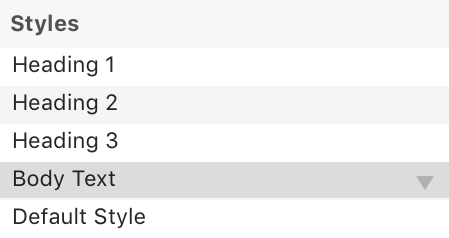
Let’s position the text in a chapter title and click on “Heading 1” in the Styles pane. Notice that the chapter title now has a different style than the rest of the body text.

But we still want to apply this style to the remaining 60 chapters. We could just search for the next chapter title, and apply the style again, but there is an easier way.
Storyist has a tool that can apply styles by matching text, so let´s use that. Choose Format > Style > Apply Styles by Matching Text. You’ll see a dialog containing the matching table. Add an entry for “chapter” and select the style to be “Heading 1,” and click OK.
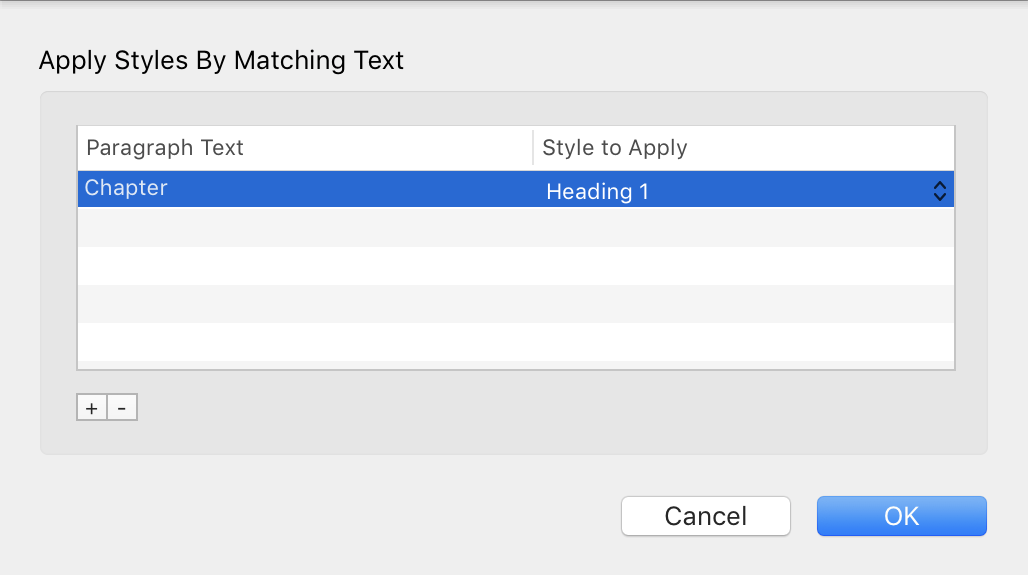
Notice that all 61 chapter titles now have the Heading 1 style and that these titles now appear in the project view.
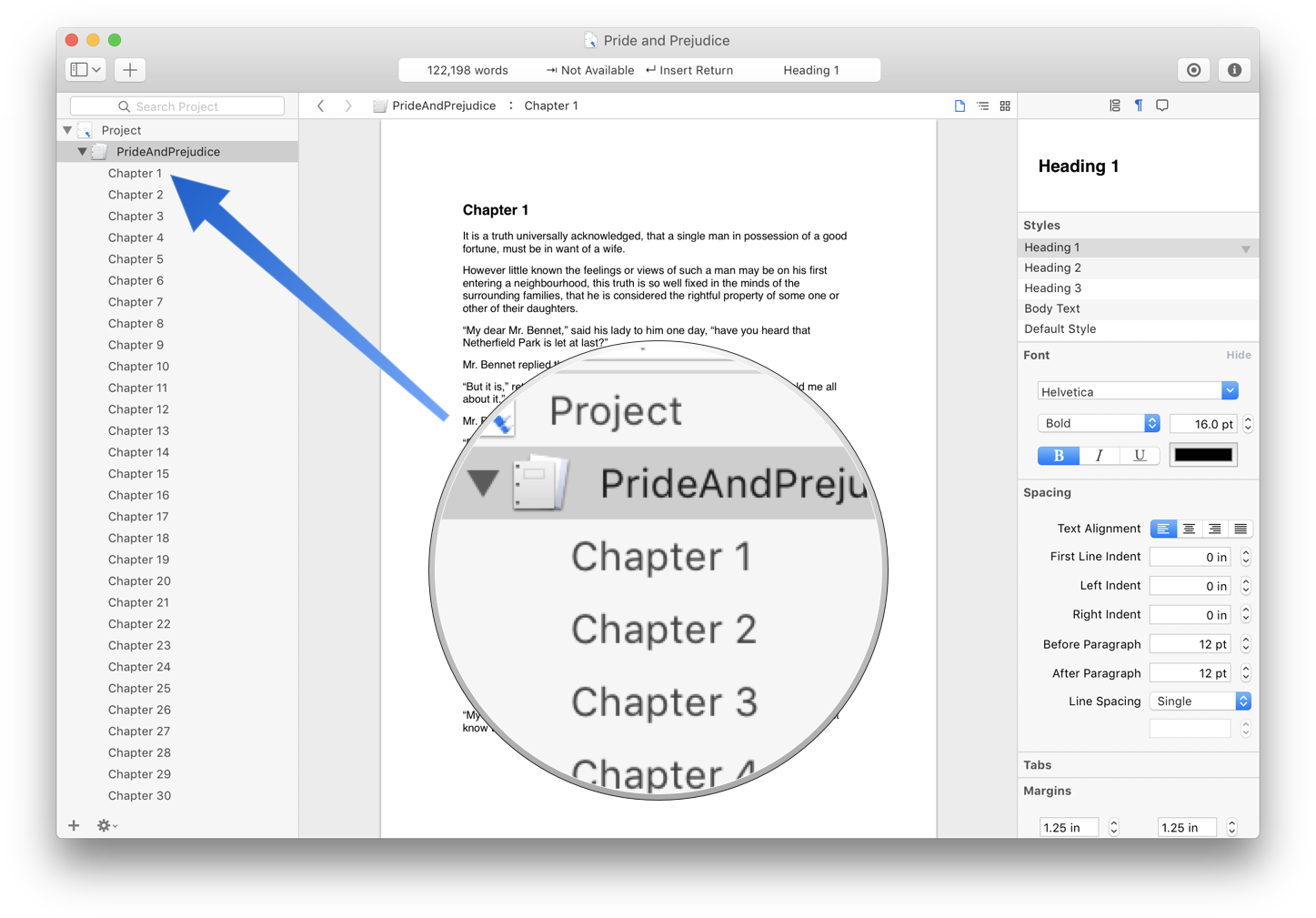
That’s great! Except novel manuscripts are usually set in double spaced Courier. There are a couple of ways to fix that.
The first is to format a selection with the desired values, and then update the underlying style to have the new values.
Let´s select a chapter title, change the font to Courier, and make it center aligned. Notice that the inspector shows the changes to the underlying style as we make them. In this case, “Heading 1 + Font: Courier, centered.” The red arrow next to Heading 1 in the Styles table indicates that formatting for the selected text has been modified from the assigned style.
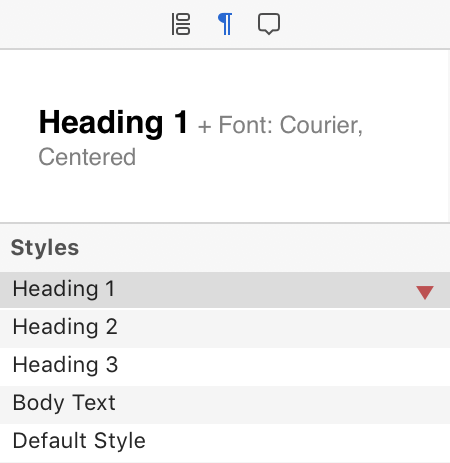
When you´re happy with the formatting, choose Format > Style > Redefine Style from Selection.
Notice that when you do this, all of the text (all 61 chapter titles) having the Heading 1 style has been updated to have the new formatting. Pretty powerful.
Another way to edit styles is to use the style editor. To do this, just place the cursor in the text having the style you want to edit and choose Format > Style > Edit Current Style. This brings up the style editor.
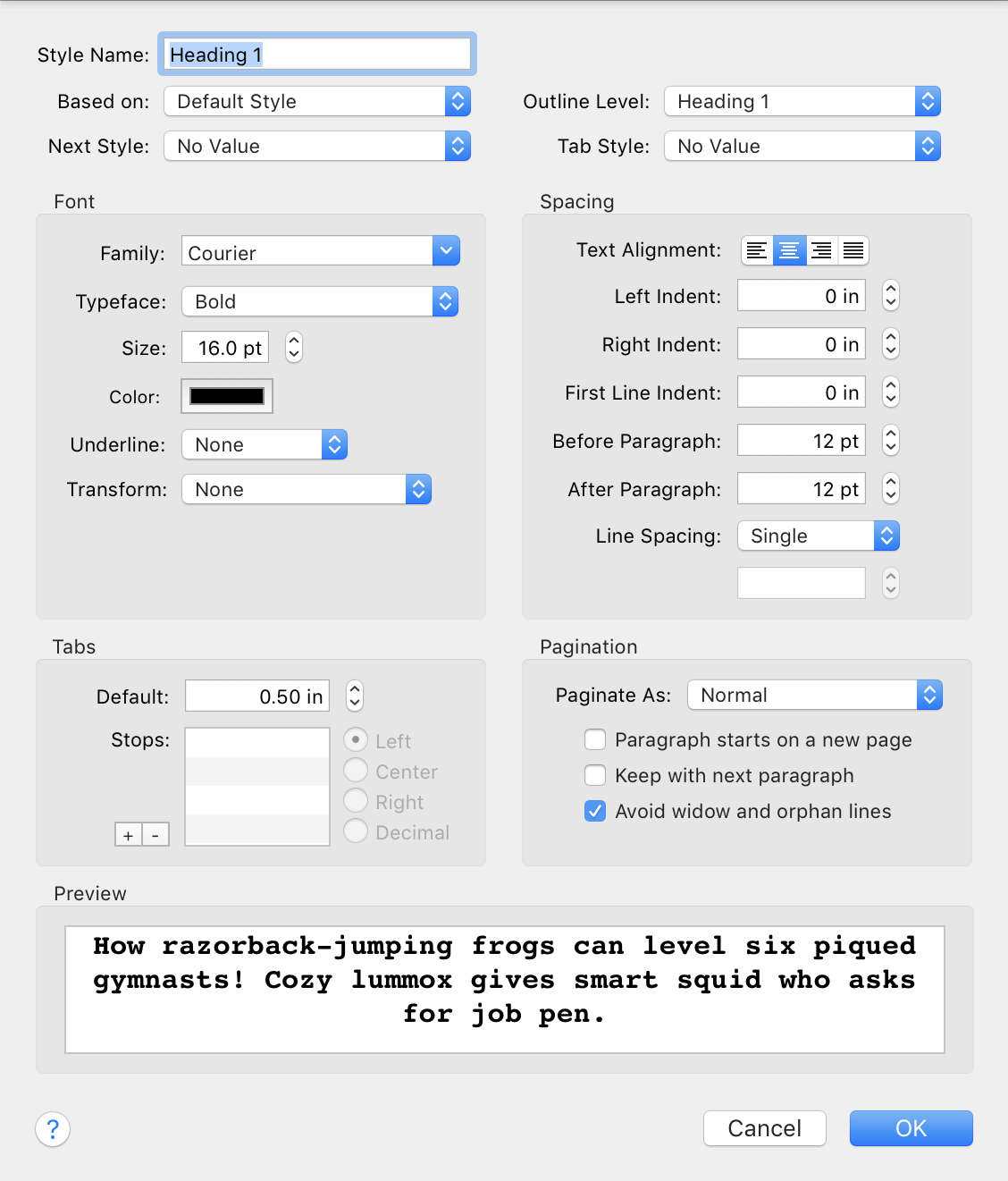
Notice that the style editor let you control not only the font, spacing and tab settings but also the heading level and text transforms. We want the chapter titles to be set in all caps, so we’ll make that change here, and click OK.
Again, all the chapter titles are now set in all caps.
At this point, we could make the remaining changes we want to the Heading 1 style and then make similar changes to the body text style, but let’s take a look at another incredibly powerful tool–the style sheet replacement tool.
The style sheet replacement tool lets you reformat your text with style sheets from other project files, from text file templates, and from the built-in default style sheets.
Since we’re looking to use the standard manuscript format for this project, we’ll choose Format > Style > Replace Styles > Novel Style Sheet to get the default novel style sheet.
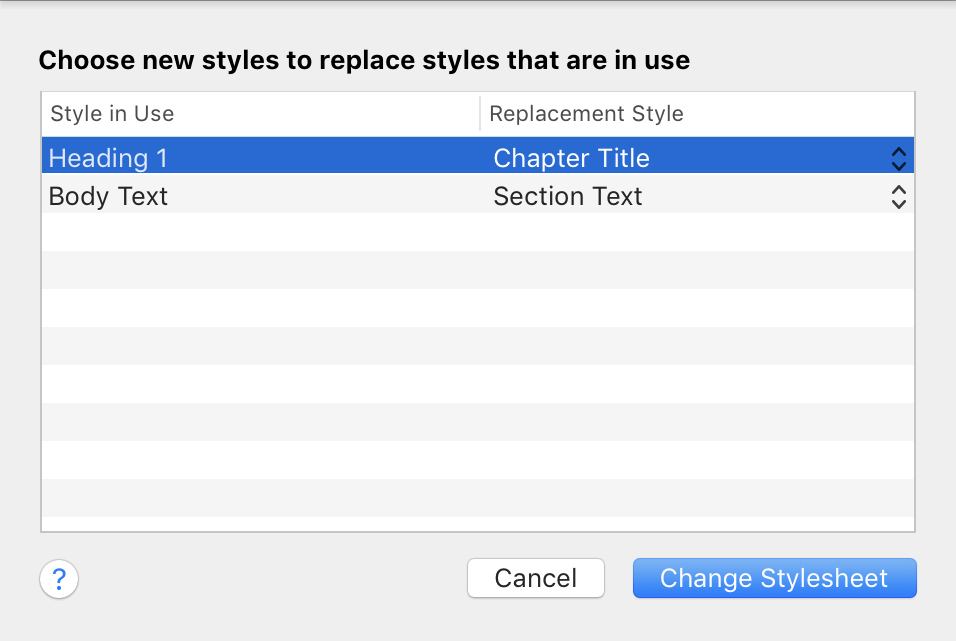
Notice that the table has two columns. The one on the left shows the styles that are currently used in your manuscript. The one on the right shows the replacement styles that will be applied.
The default values are correct. Click “Change Stylesheet.”
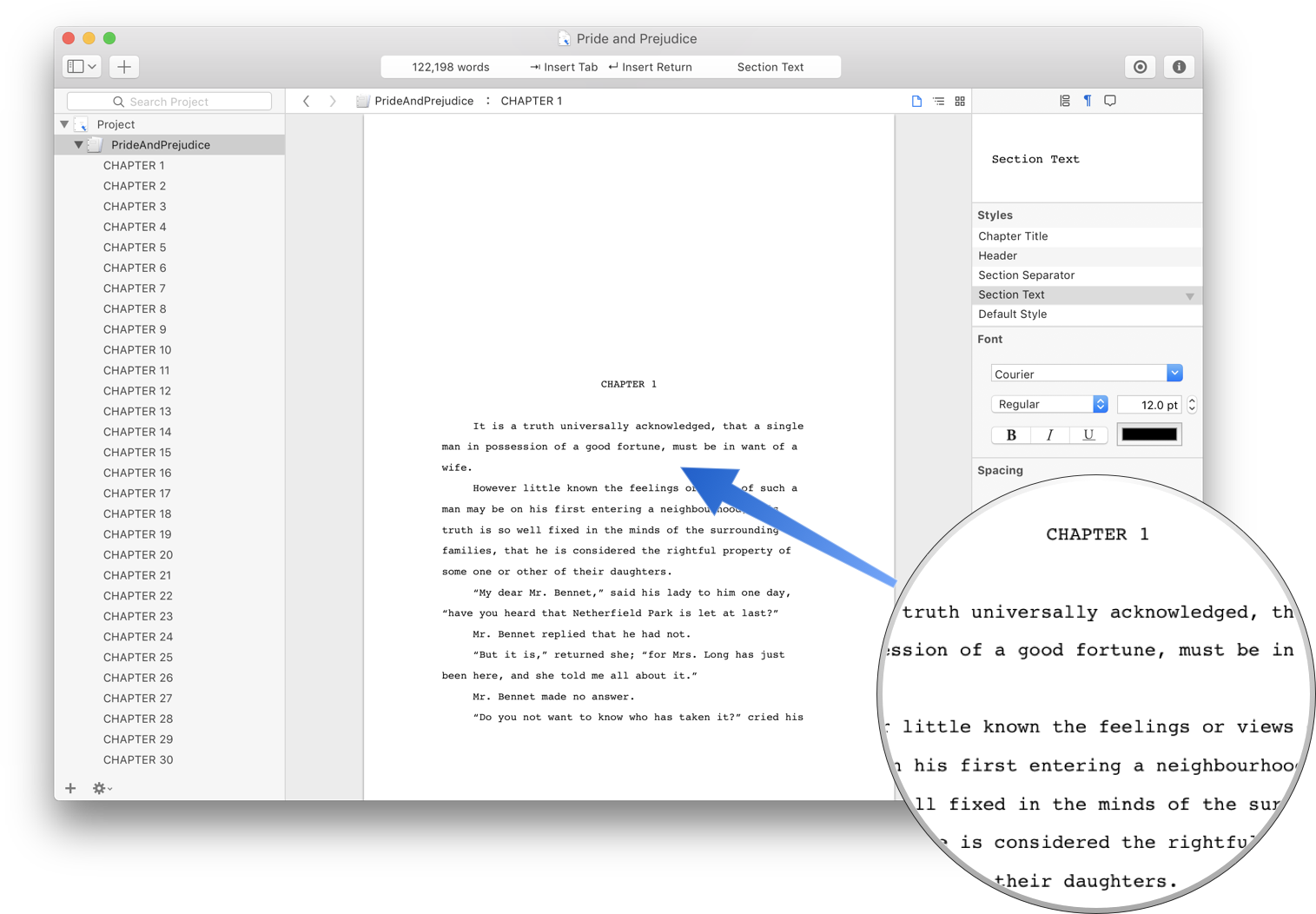
That’s it. With these few simple steps, your plain text file is now formatted in the standard manuscript format.